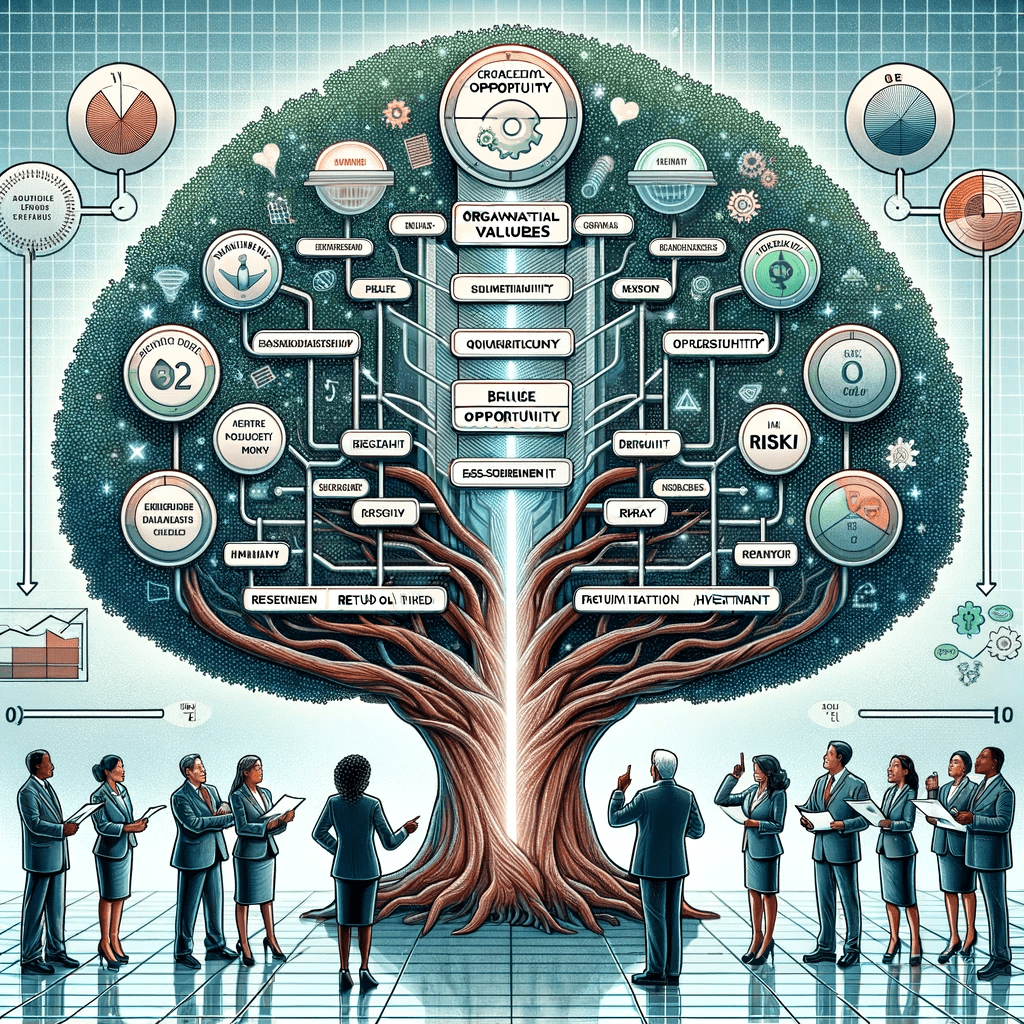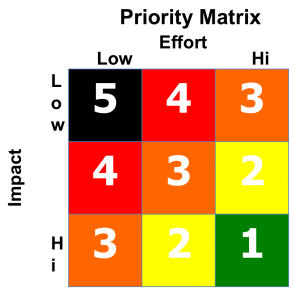
What is needed is to draw this decision criteria out of your head and share it with an entire team or company. By doing this, you will accelerate the entire planning process and the manner decisions are being made throughout the organization. If the organization agrees on how decisions will be made upfront imagine how much faster organizations will move and how much further down the organization decision making can happen.
Choosing Criteria for Decision Making
What are criteria for critical decisions? These are factors that you consider when making a decision. When you are making a decision you likely have a mental model that works in your head. For me a breach in organizational or personal values is a non-starter. If what ever I am evaluating does not hold up to my values the evaluation is over. Each industry, organization, divisions, units or people will have differing criteria of how they make decisions. A great leader will help the group understand what criteria should be used to arrive at a decision in an organization and then drive everyone in the organization to consider those aspects of a decision before making a decision or when needed asking for support or permission to go forward. Examples of some criteria organizations use to make decisions are impact to the organization, revenue opportunity, risk of failure, return on investment and the list goes on. There are a number of ways to use these criteria when evaluating alternative choices to determine the direction you will go. What are the criteria you use when needing to make a decision?
Setting up a Criteria for Decision Making Using Ranking System
There are different ways to set up a system. I prefer the Likert Scale. Using a Likert you can apply different categories such as 1 to 10 where 1 represents Low and 10 represents Hi, or 1 is disagreement and 5 is agreement, and so on. It is important to remember if you are going to graph these elements on a X / Y axis then you will want to rationalize the scales. Meaning, if you are looking at growing revenue where 1 represents no growth and 5 high growth and you then chart risk on the opposite axis, then you will want the negative to be represented by a 1 and the positive (or no risk) represented by a 5. In this way you will be able to correlate the two elements together. When choosing your system put them all on the same scale 1 to 3, 1 to 5, 1 to 10 so that you can better align each factor with each other.
How many Criteria?
If you want to graph the decisions it would be good to keep it to no more than four criteria. The first two will give the greatest visual direction by putting them on the X and Y axis. The more juxtaposed these criteria are from one another, the better the visual impact will be on the graph. The next two criteria can be graphed as bubbles where size can represent scale and color can represent the fourth criteria.
Calibrate the Criteria for Decision Making
Once you have determined the criteria for decision making it is important to define how you would rate each of the criteria. What does it mean to the organization when you are considering multiple choices to evaluate and each team member is rating each criteria on a 1 to 5 scale? Unless you specify in advance what a 1, 2, 3, 4, or 5 represents you will have no calibration between the different opinions. Imagine one of your criteria was in measuring risk to the organization. What does that even mean to you? Does it mean something altogether different to another executive or employee within the organization? The other day I was working with a fast growth software company that had decided one of the criteria was revenue growth. After rank ordering a mock decision we went around the table to ask how people responded on their one to five scale to see how close we were before defining the criteria. Only about 3 out of 8 were in alignment on what each number meant to them. So, had we not calibrated between each member of the team what our numeric scale represented we would not even have a glimmer of hope in understanding each decision makers point of view. We did this around each of the four criteria we choose and then we started evaluating as a team a group of eight imperatives that we wanted to narrow down to four based on the criteria we mutually arrived at as an executive team.
Weighting Criteria
“Things which matter most must never be at the mercy of things matter least.” That goes for the criteria for decision making you choose to make decisions as well. It is not enough to come up with the top 4 criteria for decision making. Decide what criteria for decision making is worth more to you and create a weighted scale. I often use a spreadsheet in which you can list your decision criteria down the first column and you can put your alternative choices you’re considering across the first row. I use a weighting factor of a multiple of one for each criteria I am using so if I have four criteria the first one gets a 4x, the third a 3x, the second a 2x and the last 1x. This way your first criteria will get a boost over your last criteria. (attached is a PDF work sheet that you can use) Value Scale .
Charting Criteria – Priority Matrix
By limiting your criteria for decision making to the top four you will help your team and yourself be very clear on how to make great decisions and move forward fast. It will also allow you to graph your decision using a matrix. (See Matrix above) There are some powerful ways to visual present information to make your point even stronger. A great place to learn techniques to to this is checking out Edward Tufte.
Software Applications for Decision Making
Decision Making Tool – CO2 Partners uses this form for helping clients make decisions. It is easy to use and very straight forward. The weighting of criteria is increased by one multiple per item.
Conclusion
Effective decision-making in an organization is not just about choosing the right path; it’s about creating a shared understanding and approach to how decisions are made. As we’ve explored, setting clear criteria, understanding the weight of each factor, and effectively communicating these through tools like the Likert Scale and Priority Matrix are essential. But even with the best systems in place, the human element remains critical.
This is where the role of skilled executive coaching comes into play. At CO2 Coaching, we understand that decision-making is an art that requires both intuition and strategy. Our coaching services are designed to enhance this skill among leaders and teams, fostering an environment where decisions are not just made but are made well, with a deep understanding of their impact on the organization and its goals.
Whether you’re looking to refine your decision-making process, align your team around shared criteria, or simply enhance your leadership skills, CO2 Coaching is here to guide you. We invite you to reach out and schedule a session with us. Together, we can transform the way decisions are made in your organization, leading to more effective, efficient, and impactful outcomes. The path to better decision-making and organizational success is just a conversation away.




